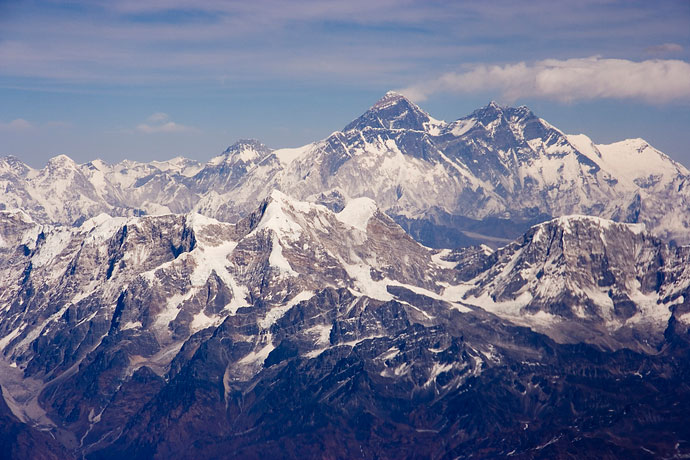Mount Everest Is A ‘Fecal Time Bomb’ Covered In Human Poop

Image via Flickr/ r12a
At just over 29,000 feet, Mount Everest is the world’s highest mountain and a majestic goal for mountaineers. It’s also covered in human waste.
According to the Associated Press, more than 700 climbers and guides spend two months on Everest each climbing season, leaving “large amounts of feces and urine” along with lots of trash. At Everest’s base camp, there are toilet tents with drums to store the waste, says the AP; filled drums are carried to a lower area where the waste is disposed of. However, the four camps at higher elevations lack these facilities.
“Climbers usually dig holes in the snow for their toilet use and leave the human waste there,” Ang Tshering, president of the Nepal Mountaineering Association, told the AP, saying that the waste has been “piling up” for years around the four camps.
Even the base camp isn’t as sparkling as one would hope. Fecal coliform bacteria are menacing the nearby Khumbu Glacier watershed, according to Grinnell College, which reports that up to 26,500 pounds of human waste are produced on Everest every climbing season, “most of it bagged and carried by native Sherpas to earthen pits near Gorak Shep, a frozen lake bed and village at 16,942 feet.”
Tshering warns that human pollution — especially of the fecal variety — has reached critical levels, according to the Washington Post, and says that it threatens to spread disease on Everest.
In a Washington Post article from 2012, Outside Magazine editor Grayson Schaffer describes Everest as a “fecal time bomb,” writing that the mess of waste was slowly sliding back toward base camp.
Although Nepal hasn’t yet come up with a plan to eliminate waste, officials stationed at the base camp will “strictly monitor” garbage on the mountain beginning this climbing season, Puspa Raj Katuwal, the head of the government’s Mountaineering Department, told the AP. Last year, new regulations were put in place requiring each climber to bring 18 pounds of trash (the amount Nepal’s government estimates each person discards along the route to the top) down to the base camp. Climbing teams that fail to do so will lose a $4,000 deposit.







































